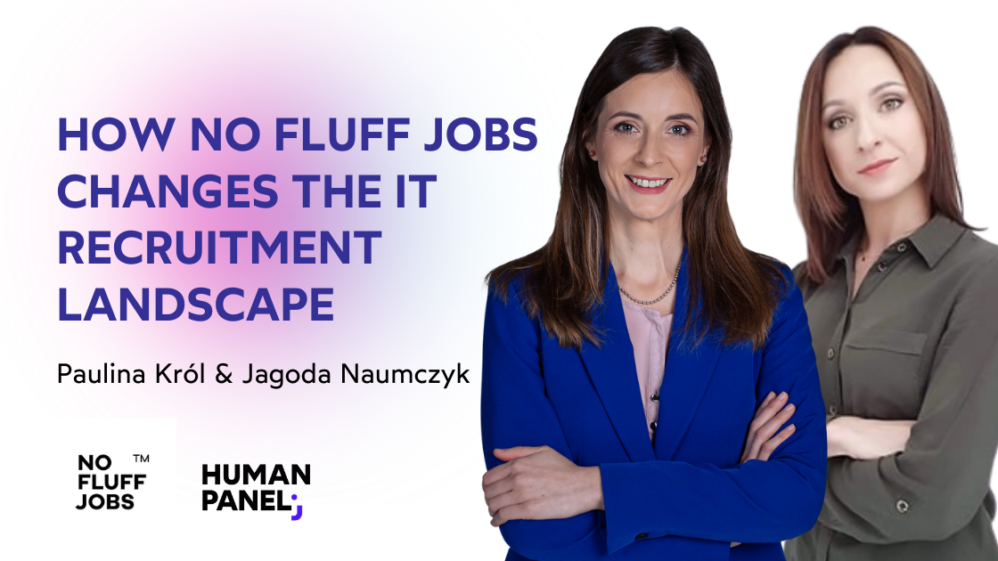How Netguru stopped turnover among seniors with people analytics

Kuba Filipowski, Chief Strategy Officer and Co-Founder at Netguru, shares six most valuable lessons about people analytics.
Discover how you can unlock the power of people analytics with Human Panel.
A few years ago, people analytics was a novelty that many executives were skeptical of. Today, most C-level executives are aware of the value it brings to the business and that HR can and should be data-driven – just like sales, marketing, or finance.
It’s people analytics that helps CEOs and HR leaders link HR goals to business KPIs and predict the ROI of HR initiatives. It’sa science that helps you get rid of frustration and guessing and support HR decisions with facts, not feelings. With the right data, you can manage your HR with measurable KPIs and make HR build a strategic vision instead of spending time on operational tasks.
HR analytics is sometimes undervalued or less valued than sales or marketing data. But if you don’t understand the position and importance of your people, you lose a competitive advantage.
Kuba Filipowski, Co-Founder of Netguru
Kuba Filipowski shared with Human Panel some of the most valuable insights about people analytics he gained during his leadership at Netguru. Since 2008 Netguru has grown from a startup to a market leader with a team of more than 800 employees. Today it is one of the fastest-growing companies in the EU and a Great Place to Work award winner.
Here are some of the biggest challenges and lessons:
Lesson 1: People analytics for workforce planning
“There was a time when we hired a lot of juniors at Netguru. They stayed with the company for several years, but took longer to perform and be as productive as expected. So we started hiring more mid-level and senior candidates who could immediately contribute to ongoing projects. Suddenly it turned out that turnover among them was much higher than we had expected.
Without data, you can’t determine the reasons for attrition. People are leaving, but why? With data, you can better address your strategic workforce planning and create an effective succession plan.
We decided to revamp the hiring strategy, going back to hiring more junior employees and then training them for future roles. The tactic paid off, but with people analytics, we likely would have prepared the succession plan in advance and structured our hiring strategy differently from the start.”
Lesson 2: People analytics for stopping turnover
“The data helped us reframe our exit interviews. We decided to ask employees why they were leaving and dig deeper into their answers. When our employees indicated that compensation was why they left, we asked about the compensation difference between our competitors and us. It turned out that in some cases the difference was 100%.
That prompted us to redefine the compensation policy at Netguru and raise our salary ranges, though if someone’s doubling their salary, there’s still no way we can stop them.
Employee retention data is still a blank space. With people analytics you can find out how employees perceive your company, how they rate their manager and what stage of their career they are at when they leave.
Dig deeper, and you may discover some patterns: maybe the career paths are misdesigned, or perhaps there’s no career path at all? You can use the data to determine whether there’s a glass ceiling in a team or department. If so, what can you do to dismantle it? How can you redesign your processes to make people stay? There’s a whole universe of valuable insights out there – you just have to know where to look.“
Lesson 3: People analytics to review costs
“Once we redefined our salary ranges, we could retain our top talent. Such a change leads directly to cost optimization. If you’re running a company of 1,000 employees, reducing turnover from 20% to 18% is simply a significant saving, not to mention a big boost in intangibles like morale and company culture.
Furthermore, making the right decisions and hiring the best talent is related to the quality of our work and the results we deliver to our clients. When we hire the best people, compensate them with market-rate salaries and keep them motivated, our customers get a better product.
The revision of compensation benchmarks led us to raise salaries and prices. Netguru customers accepted this move. Some of them even told us, “We’ve been waiting for this. You do great work, but you charge far too little.”
Lesson 4: People analytics for benchmarking
“On a more general level, people analytics helps you optimize processes and gain more insights into the market. It allows you to predict trends and assess whether your business model is in line with market realities.
How do I compare to others? Where do I position myself in the market? These questions are crucial if you decide to grow your business or enter new markets. People analytics can show you regional differences in labor laws, work culture, or even salary expectations.
With data, you can standardize most issues while segmenting and customizing them to meet specific needs. I believe personalization and segmentation are the future of HR because they allow you to tailor what you offer to different groups.“
Lesson 5: Business decisions influence people
“To make informed business decisions, you have to know your people. Tracking and organizing basic HR metrics can be invaluable to your decision-making process. The age of your employees, where they live, whether or not they have children – all of these can influence your business policies.
With people analytics, you can determine whether board decisions such as hybrid work, returning to the office, or shorter hours impact your employees. A decision to switch entirely to remote working can lead to higher absenteeism for some groups of employees. Mandating a return to the office can eliminate a valuable talent pool. Whatever you do, it impacts people, which brings us to the most important lesson I have to share:
Lesson 6: People make companies
When running an organization of 800 people, there’s no other way to know what’s going on than to analyze your workforce. But that doesn’t mean the algorithms, robots, and AI make decisions for us.
There are people at both ends: people run organizations, and people buy the products or services they offer. We can never forget that there is always a human factor in everything we do. Even Google says that the goal of people analytics is to “complement, not replace, human decision-makers” – and I couldn’t agree more.”
Sign up for our free demo to see how data can complement and support your HR decisions:




